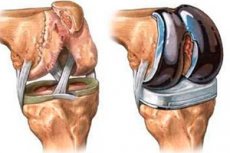New publications
What is smart endoprosthetics?
Last reviewed: 02.07.2025

All iLive content is medically reviewed or fact checked to ensure as much factual accuracy as possible.
We have strict sourcing guidelines and only link to reputable media sites, academic research institutions and, whenever possible, medically peer reviewed studies. Note that the numbers in parentheses ([1], [2], etc.) are clickable links to these studies.
If you feel that any of our content is inaccurate, out-of-date, or otherwise questionable, please select it and press Ctrl + Enter.

American orthopedic specialists have predicted the imminent introduction of “smart” knee-joint endoprostheses into medical practice.
Representatives from Stony Brook University, the University of Western Ontario and Binghamton University have mastered the technological ability to monitor the wear of artificial joints and manage rehabilitation.
Knee replacement surgery is one of the most common orthopedic surgeries. Many such surgeries have to be repeated to replace a broken or worn-out prosthesis.
Most often, young physically active people seek medical help, who continue to maintain physical activity and lead an active lifestyle even after artificial knee replacement. However, this activity has its own "minus": the endoprosthesis wears out quickly, and there is a need for a repeat replacement.
Almost never, doctors know and cannot know the level of physical activity of patients who have undergone endoprosthetics: they only record the wear of the joint and prescribe the next revision. For young people, repeating the operation every 5-10 years is quite a serious problem, and not only a financial one. Therefore, many patients try to find a "golden mean" between adequate physical activity for health and avoiding excessive stress on the joint.
American researchers took on the solution to this problem and eventually created a “smart” knee-joint endoprosthesis capable of monitoring and controlling motor load.
The endoprosthesis contains built-in sensors that record pressure on the joint and provide an idea of the degree of wear of the implant. This innovation allows the patient to monitor the condition of the prosthesis, limit the load if necessary, and thereby extend the period of use of the implant.
Since the use of a removable battery in the endoprosthesis seemed inconvenient to scientists, they developed an autonomous energy generation mechanism capable of powering the device through joint movement.
At the moment, the "smart" device has already been tested on a special test bench. The essence of the development is as follows: during movement, the artificial joint produces friction with its surfaces, feeding the load sensors. According to preliminary studies, such feeding does not require significant physical activity. Even a regular walk will generate a sufficient amount of microwatts to feed the sensors.
The creation of more durable endoprostheses will allow patients to improve their quality of life and seek orthopedic care less often.
Information is presented on the page: Binghamton University
